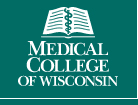Multi-site Validation and Application of a Consensus DSC-MRI Protocol
| Status: | Not yet recruiting |
|---|---|
| Conditions: | Brain Cancer |
| Therapuetic Areas: | Oncology |
| Healthy: | No |
| Age Range: | 18 - Any |
| Updated: | 1/19/2018 |
| Start Date: | February 2018 |
| End Date: | July 2021 |
| Contact: | Chad Quarles, PhD |
| Email: | Chad.Quarles@barrowneuro.org |
| Phone: | 602-406-3484 |
Multi-site Validation and Application of a Consensus Dynamic Susceptibility Contrast Magnetic Resonance Imaging (DSC-MRI) Protocol
This clinical trial is to validate and demonstrate the clinical usefulness of a protocol for
Magnetic Resonance Imaging (MRI) in people with high grade glioma brain tumors.
Magnetic Resonance Imaging (MRI) in people with high grade glioma brain tumors.
Although DSC-MRI itself is not novel, the consensus protocol tested herein is newly developed
in response to a stated need by federal agencies (FDA, NCI) for standardization of imaging
endpoints, including perfusion-weighted MRI, in multi-center clinical trials of GBM
therapies. Through use of stereotactic methodologies that have been used to demonstrate that
rCBV(relative cerebral blood flow) and FTB(fractional tumor burden) measures made by the
consensus DSC-MRI protocol are concordant with tissue histology, this multi-site trial will
be the first to validate a consensus DSC-MRI protocol on multiple platforms representing all
major MRI scanner manufacturers. The trial also formally compares two contrast agent dosing
schemes proposed in the consensus protocol, a single-dose BTIP-compliant scheme and a
double-dose scheme. Such a comparison has never been tested in patients before, and addresses
a longstanding controversy regarding contrast agent administration and dosing for DSC-MRI.
Successful validation of the consensus DSC-MRI protocol will likely shift clinical practice
paradigms. To date, the widespread adoption of DSC-MRI has been limited by inconsistent
published methodologies, rCBV thresholds, and impact on clinical decision making. This trial
seeks to improve confidence in DSCMRI methodology as it will foster its adoption for
multicenter trials, facilitating the development and testing of novel therapeutic agents and
treatment strategies for GBM, and shift clinical practice paradigms by providing strong
evidence to support the inclusion of DSC-MRI in established response assessment criteria
(i.e., modified RANO).
in response to a stated need by federal agencies (FDA, NCI) for standardization of imaging
endpoints, including perfusion-weighted MRI, in multi-center clinical trials of GBM
therapies. Through use of stereotactic methodologies that have been used to demonstrate that
rCBV(relative cerebral blood flow) and FTB(fractional tumor burden) measures made by the
consensus DSC-MRI protocol are concordant with tissue histology, this multi-site trial will
be the first to validate a consensus DSC-MRI protocol on multiple platforms representing all
major MRI scanner manufacturers. The trial also formally compares two contrast agent dosing
schemes proposed in the consensus protocol, a single-dose BTIP-compliant scheme and a
double-dose scheme. Such a comparison has never been tested in patients before, and addresses
a longstanding controversy regarding contrast agent administration and dosing for DSC-MRI.
Successful validation of the consensus DSC-MRI protocol will likely shift clinical practice
paradigms. To date, the widespread adoption of DSC-MRI has been limited by inconsistent
published methodologies, rCBV thresholds, and impact on clinical decision making. This trial
seeks to improve confidence in DSCMRI methodology as it will foster its adoption for
multicenter trials, facilitating the development and testing of novel therapeutic agents and
treatment strategies for GBM, and shift clinical practice paradigms by providing strong
evidence to support the inclusion of DSC-MRI in established response assessment criteria
(i.e., modified RANO).
Inclusion Criteria:
- Histologically proven intracranial glioblastoma or gliosarcoma at initial surgery
- Patient is currently being treated with standard first-line therapy for
glioblastoma/gliosarcoma
- Karnofsky performance status ≥ 70
- Age ≥ 18 years
- Women must not be pregnant or breast-feeding as gadolinium enhanced MRI is
contra-indicated
- Progressive contrast enhancement (> 25% increase in contrast enhancing volume compared
to nadir, not corresponding to a region of peri-operative infarct seen on immediate
post-op MRI) identified on routine surveillance MRI, with plan for surgical
biopsy/resection. Measurable enhancement is defined as two perpendicular in-plane
diameters of at least 10 mm and at least 10 mm in the 3rd orthogonal direction. This
must be the patient's initial recurrence.
- Intratumoral hemorrhage (acute, subacute, or chronic) as seen on hemosiderin-sensitive
(gradient-echo) MRI may preclude patient inclusion because of anticipated limited
evaluation due to magnetic susceptibility artifact on the heavily T2*-weighted DSC-MRI
images. If the region of enhancing tumor not affected by blooming artifact on the
hemosiderin-sensitive images does not meet the 10 x 10 x 10 mm "measurable
enhancement" threshold specified elsewhere, the patient is ineligible.
- Patients must be able to tolerate brain MRI scans with dynamic intravenous
gadolinium-based contrast agent injections
- No known allergy-like reaction to gadolinium or moderate or severe allergic reactions
to one or more allergens as defined by the American College of Radiology (ACR);
- Weight compatible with limits imposed by the MRI scanner table.
Exclusion Criteria:
- Does not meet inclusion criteria
We found this trial at
3
sites
Brown University Located in historic Providence, Rhode Island and founded in 1764, Brown University is...
Click here to add this to my saved trials
Medical College of Wisconsin The Medical College (MCW) of Wisconsin is a major national research...
Click here to add this to my saved trials
Click here to add this to my saved trials

